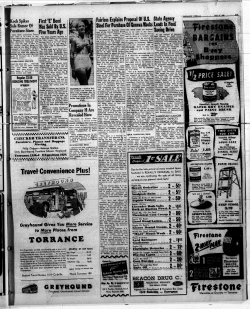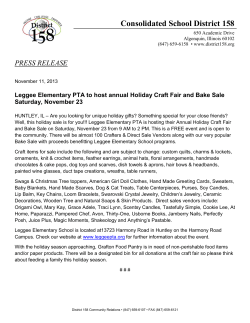
Body-in-White technology in the new: Saturn Outlook GMC Acadia & Buick Enclave
Body-in-White technology in the new: Saturn Outlook GMC Acadia & Buick Enclave Terry Swartzell and Don Kolis General Motors North America March 7, 2007 Swartzell www.autosteel.org Outline • Vehicle architecture • High level body-in-white strategy • Underbody steel strategy • Uppers steel strategy • Construction • Performance • Questions Swartzell www.autosteel.org Outlook, Acadia & Enclave architecture • All new BFI crossover utility platform for GM. • Spacious accommodations for 7 or 8 passenger. • 3.6L transverse V6 and sixspeed transmission. • Offered in both AWD and FWD versions. • Built in new Delta Township plant near Lansing, Michigan. • EPA estimated 26 MPG highway (FWD). Swartzell www.autosteel.org Market trends (selected vehicles) Chev Suburban Ford Expedition Nissan Armada Chev Tahoe Toyota Sequoia Outlook & Acadia Dodge Durango Mercedes GL Hyundai Veracruz Chrysler Pacifica Audi Q7 Chev Trailblazer 06 Acura MDX Mazda CX-9 Honda Pilot BMW X5 Ford Freesytle VW Toureg Cadillac SRX Ford Edge Chevrolet Equinox 04 Lexus RX Nissan Murano Highlander Mazda CX-7 BMW X3 Increasing Saturn VUE Vehicle Honda Element Ford Escape size 07 Hyundai Sante 07 Honda CR-V Jeep Compass 06 Toyota RAV 4 Saturn Outlook, GMC Acadia & Buick Enclave • Market is demanding larger BFI crossover vehicles with accommodations similar to full size BOF SUV’s. • Steel technology remains key in satisfying the performance requirements of the larger BFI entries at a competitive mass. Body-on-Frame (BOF) sport utilities OAL x OAW x OAH Body-Frame-Integral (BFI) crossovers Swartzell www.autosteel.org BIW high level strategy World class BIW performance across platform bandwidth. Enable competitive mass with effective geometry, steel selection and optimization. Configure BIW to achieve best-inclass interior spaciousness Maximize re-use for future variants. Aggressively leverage AHSS, UHSS & HSLA’s in cost effective applications. Advance GM common product and process strategies. Swartzell Develop enablers to achieve world class quality: - gap and flushness of fits - “jewel effect” features on panels - secondary surfaces appearance www.autosteel.org BIW structure features Open front end facilitates vehicle assembly. Straight rails tuned for high crush efficiency. Laminated steel plenum. Pumpable foam acoustic cavity treatments. Cost effective usage of martensitic, D-P, and HSLA steels in primary load paths. Rear HVAC duct integrated inside section. Layered framing allows welding prior to outer panels closing section. Sub-assembly of structure surrounding lift-gate provides high torsional stiffness. Swartzell www.autosteel.org UHSS straight C/C tube manages side impact load. Steel selection strategy Steel specification strategy Tensile Strength Grades used Typical usages Mild steel Low Carbon Large underbody closeout panels, highest quality outer panels. 260 - 270 Bake hardenable 180-210-300 Stiffness dominant parts and formability restricted parts. 300 - 390 HSLA 340-410-550 Strength dominant parts with minimal energy absorption. 440 - 650 Strength dominant energy absorption parts and high strain parts. 590 - 980 Dual Phase DP600 DP800 DP1000 Martensitic Grade 9 Grade 13 (mPa) Parts requiring highest ultimate strength. Swartzell www.autosteel.org 900 - 1300 Steel grade usage percent by mass Martensitic 7% Grade 9 – Grade 13 Low Carbon 26% Dual Phase 7% 600 - 800 - 1000 HSLA 34% 340 - 410 - 550 Bake Hardenable 26% 180B - 210B - 300B Swartzell www.autosteel.org Underbody steel applications Steel grade usage (underbody) Martensitic F.O.C. Dual Phase HSLA Bake Mild Martensite applications • Used where maximum strength is required for crash (rockers and cross-members). • Constant sections provide structural continuity and allows roll form processing . • Both Grade 9 and Grade 13 used based on optimum weldability. Cross-car tube Rocker Inner panels Swartzell www.autosteel.org Underbody steel applications Steel grade usage (underbody) Martensitic F.O.C. Dual Phase HSLA Bake Mild Dual-Phase applications • Used in crush zones for improved energy absorption. • Also used in high strain areas. • Use DP 600 and DP 800 grades in underbody based on manufacturability. Swartzell www.autosteel.org Underbody steel applications Steel grade usage (underbody) Martensitic F.O.C. Dual Phase HSLA Bake Mild HSLA applications • Used as complement to Dual Phase to facilitate weldability. • Used where high yield strength is required but with minimal energy absorption need. • Use 340, 410 and 550 grades based on formability. Swartzell www.autosteel.org Underbody steel applications Steel grade usage (underbody) Martensitic F.O.C. Dual Phase HSLA Bake Mild Bake Hardenable applications • Used in stiffness dominant parts and formability restricted parts. • 180, 210 and 300 grades of bake hardenable used. Swartzell www.autosteel.org Steel grade usage (underbody) Martensitic F.O.C. Dual Phase HSLA Bake Mild Low Carbon applications • Used to close out underbody. • Not treated as primary load path. • Thickness minimized for mass and cost efficiency. Swartzell www.autosteel.org Steel grade usage Upper structure steel applications (upper structure) Martensitic F.O.C. Dual Phase HSLA Bake Mild Martensite applications • Used in rocker outer as well as underbody. • Creates fully closed martensitic rocker section. • Section stabilized with bulkheads. Rocker Outer panels • Maximizes structural efficiency for front, rear and side crash events. Kolis www.autosteel.org Steel grade usage (upper structure) Martensitic F.O.C. Dual Phase HSLA Bake Mild Dual-Phase applications • Used in “B” pillar for side impact and roof crush loading events. • DP 800 and DP 1000 grades used. Kolis www.autosteel.org Steel grade usage (upper structure) Martensitic F.O.C. Dual Phase HSLA Bake Mild HSLA applications • Used selectively for reinforcements. Kolis www.autosteel.org Steel grade usage Upper structure steel applications (upper structure) Martensitic F.O.C. Dual Phase HSLA Bake Mild Bake Hardenable applications • Used in stiffness dominant parts and formability restricted parts. • 180, 210 and 300 grades of bake hardenable used. • Grades specified based on manufacturability and strength balance. Kolis www.autosteel.org Steel grade usage (upper structure) Martensitic Dual Phase HSLA Bake Mild Low carbon applications • Used in one-piece body side outer panel and roof. • Selected to enable crisp features in styled panels for highest possible quality. • Mild steel panels not treated as load carrying primary structure. Kolis www.autosteel.org Dual Phase considerations • Develop part geometry with features to control spring back and side wall curl. • Provide greater open wall angles for spring-back compensation. • Provide constant section height to maximize shape set & strain. • Shorten overall part length to minimize twist end to end. • Plan for additional binder tonnage and try-out time to compensate die for spring back. • Reduced trim and pierce angles and use hardened/coated tool steels. • Flanging possible in non work hardened areas from draw or form dies. • Develop part to minimize compression and stretch flanges and edge splitting • Develop robust processes for weld verification. Kolis www.autosteel.org Layered framing BOP framing sequence / construction strategy facilitates weld access 1) Inner panels loaded. 2) Inner panels welded to underbody with full access. 3) Outer panels loaded. Benefits: - reduced need to weld through access holes. - has demonstrated high dimensional capability. - allows optimal welding for improved mass efficiency. Kolis www.autosteel.org Stiff back body opening built as sub-assembly Traditional back body build Sub-assembled back body build GM Framing Process Benefits: - structural continuity through corners. - effective corner reinforcement. - allows integration of HVAC duct which maximizes enclosed area of section. Results: - 25.9 N-m / deg torsional stiffness. - 24 hz first bending mode (fully trimmed) - 28 hz first torsion mode (fully trimmed) Kolis www.autosteel.org HVAC duct integrated inside welded section Lightweight design coefficient* Lightweight design coefficient used to evaluate construction and joint efficiency Results vs benchmark crossover’s More efficient Benchmark vehicle #1 6 5 Outlook, Acadia & Enclave 4 Benchmark vehicle #2 Projected Area 3 Lightweight design = coefficient 2 Benchmark vehicle #4 1 Benchmark vehicle #5 Body-in-white mass (kg) 2 Area (m ) x Torsional stiffness (N-m/deg) 0.00 Kolis Benchmark vehicle #3 2.00 * Described in SAE paper 2006 - 01-1405 www.autosteel.org 4.00 6.00 8.00 10.00 BIW noise strategy Laminated steel plenum reduces structure borne noise Extensive mobility development at isolated chassis interfaces Best practices executed to minimize wind noise at source Liquid applied sound deadener tuned for optimum performance Sealing strategy achieved aggressive body leakage targets Pumpable foam acoustic cavity treatments provide robust noise barrier and sealing. Kolis www.autosteel.org Crash Performance Overall crash performance: Competitive! Kolis www.autosteel.org Crash Test Results* Frontal Crash Driver Passenger Side Crash Driver Passenger Not yet released Not yet released * Source: National Highway Traffic Safety Administration www.autosteel.org Questions & Answers: Acknowledgements: Andy White, Bushan Dandekar, Marcel Cannon, Curt Horvath, Gary Telleck, Greg Warden www.autosteel.org
© Copyright 2025









